Legend of Venus Callipyge + Aphrodite Callipyge on the World + Venus Callipyge Painting + Others Venus. +. Priapus
Venus Callipyge: The Roman Statue of the Beautiful Buttocks
Goddess of the Beautiful Buttocks It is used to designate the famous statue of Aphrodite known as the Venus Callipyge, currently in the Archaeological Archeological Museum of Naples. It is a Roman copy of a Greek sculpture found,, in the domus áurea of Nero. Then it went to the Farnese Palace, from there to the King of Naples. Then to your current location.
The Greek voice is formed by kallos (beautiful) and pyge (buttocks). Ancient Greece knew the beauty pageants, it is known that the Callipyge festivals were celebrated in honor of Aphrodite, the celebration consisted of a beauty pageant in which women exposed their buttocks to be judged, hence the term Callipyge, the one with beautiful buttocks.
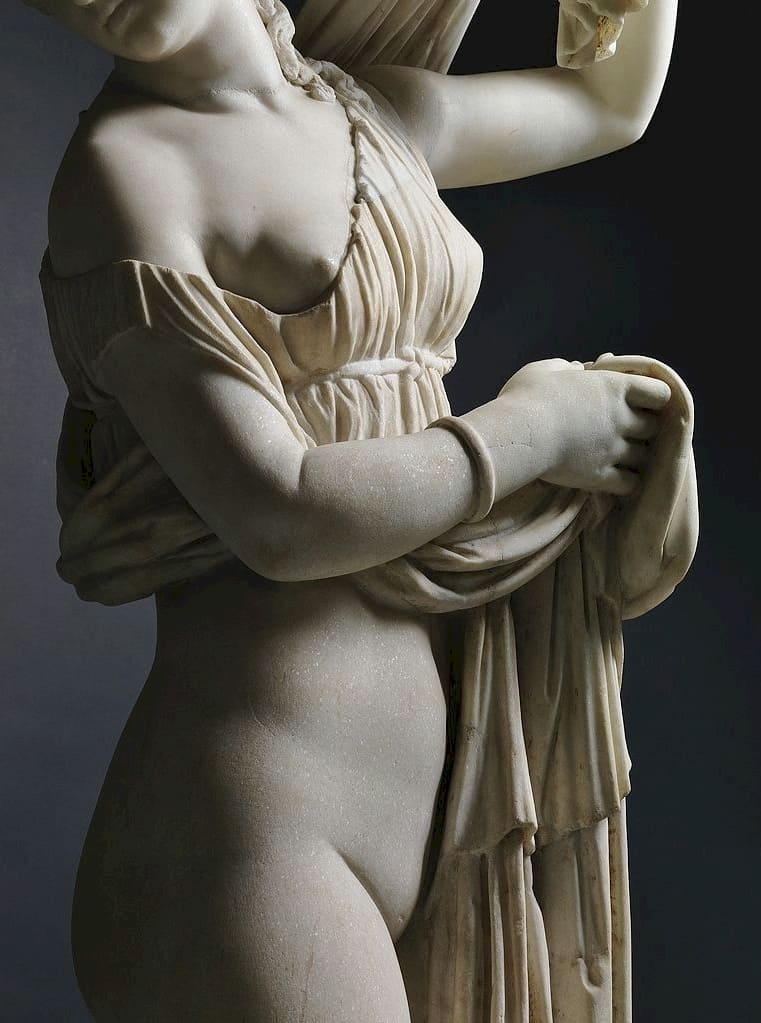
The Legend of Venus Callipyge
The origin of the cult of this Aphrodite would be the following. The ancient legends say that the two daughters of a relatively prosperous farmer in Siracusa (Italy), beautiful, cheerful and of sharp wit, bet one Sicilian summer evening on the beauty of their buttocks to see which of them was worthy of the first prize. For this they agreed to show it to a passerby and have him decide who was the winner.
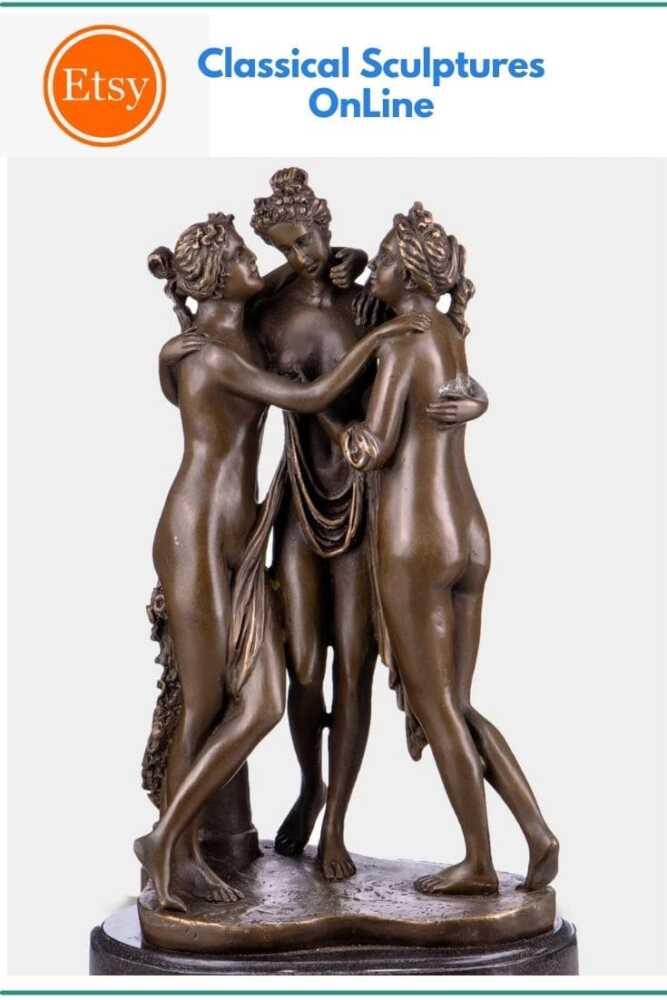
The girls lived on the outskirts of the city, so they had to wait a long time to find the appropriate judge. At last a young man with broad shoulders and a neat tunic appeared on the slope of the road. At the precise moment when he reached where they were and saw them, Helena lifted her tunic and, smiling, looked down at her buttocks.
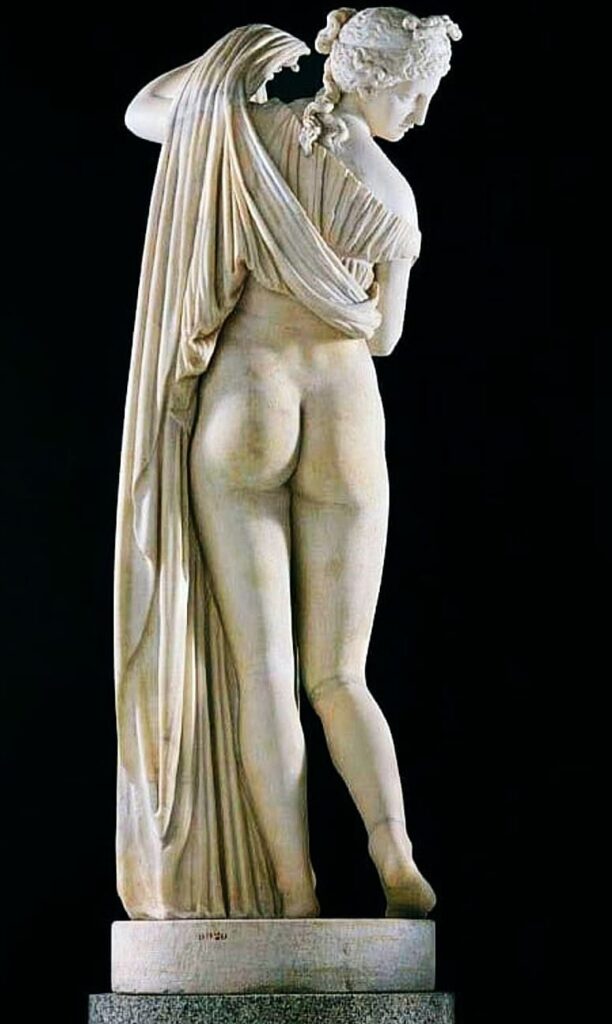
But he saw not only her buttocks, but her. Cheeky gesture, funny look without lasciviousness, the pout of his mouth, his eyes and skin illuminated by the sun. The hands holding the tunic .

Helena and Apasia
So when Aspasia told him about the bet and in turn showed him her own buttocks, he could no longer think of anything but Helena’s ass. Of course you voted for it. In fact, he fell in love with her, so much so that when he returned to the city he told his younger brother what had happened. The younger brother went to the outskirts of town as soon as he could to see the girls. It turns out that he fell in love with the younger sister, even long before he was lucky enough to see her bare buttocks.

So it was that when the boys’ father, a wealthy gentleman, tried to make his sons marry women of his position, he was unable to persuade them. At last he brought the sisters from the country, with his father’s permission, and married them to his children.
When Helena and Apasia were married they decided to build a temple in honor of Aphrodite and they called the image of the goddess Aphrodite Callipyge, perhaps because they believed that an intervention by the goddess led them to show themselves and thus find love.
Legend extracted from Archelaus of Chersonesus in his iambic verses
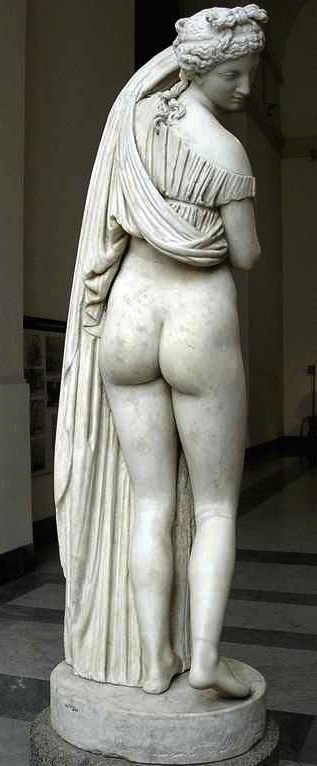
Archeological Museum of Naples
The oldest piece known to date is a copy of a Hellenistic original from the 3rd century BC, found in Rome. It was exhibited in the Farnese Palace, from where it was transferred with the rest of the collection to Naples, in 1802. It was then considered “dangerously erotic”, perhaps because it was partly covered and not completely naked like the Venus de Medici, being included , along with other pieces of this type, in the so-called Segreto Cabinet or «Cabinet of obscene objects»
Venus Callipyge on Cabinet of Obscene Objects
In 1836, César Famin thought so of the statue in the Secret Cabinet of the Museum:
The statue located in a reserved room, where the curious only enter under the supervision of a guardian; but not even this precaution has prevented the rounded shapes that earned the goddess the name Callipyge from being covered with a dark tint, betraying the profane kisses that fanatic admirers print there every day. We ourselves learned of a young German tourist, prisoner of a mad passion for this voluptuous marble. The commiseration his mental state inspired drove away any idea of ridicule
Later Copies of Venus Callipyge
A marble copy of Jean-Jacques Clérion (1686) was sent to the Palace of Versailles. Another was made by François Barois during his stay at the French Academy in Rome (1683-1686). It was also taken to Versailles and, from there, to Marly-le-Roi, in 1695, where Jean Thierry added more “clothes” so as not to offend the increasingly prudish sentiments of the time. There it remained until the French Revolution, being later transferred to the Jardin des Tuileries.
August II the Strong commissioned another copy, made by Pierre de l’Estache in Rome (722-1723) for the Großer Garten in Dresden; It was destroyed in 1945.
Venus Callipyge Painting
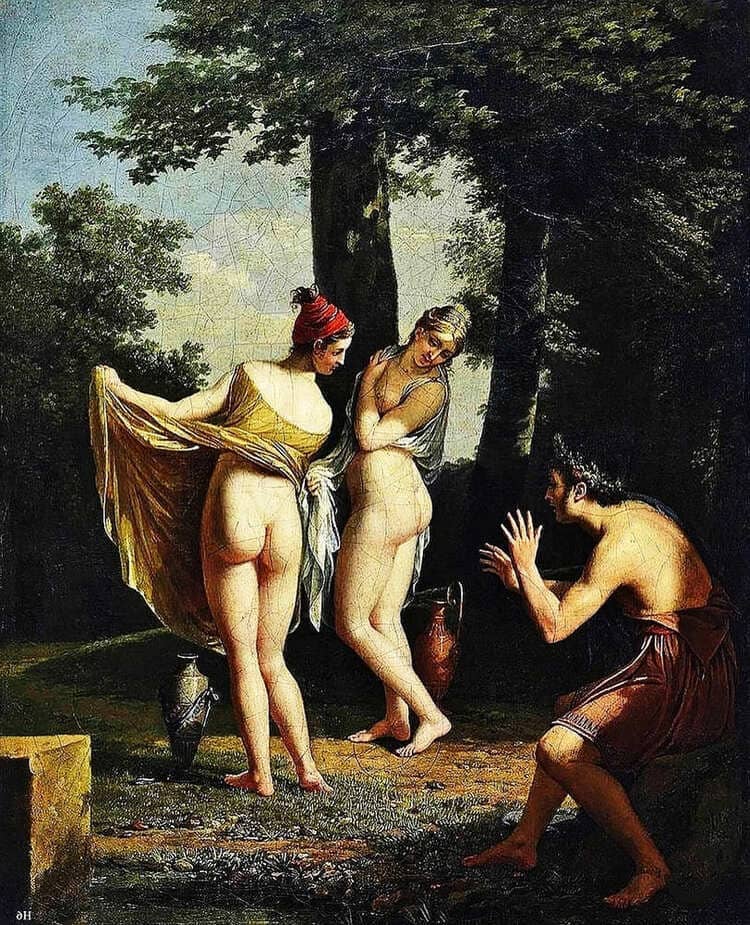
Jacques Francois Lefevre (Bayeux 1755-1830 Paris) – Greek Callipyges – Oil on canvas – 60.5 x 48.5 cm.
Price realized EUR 49,500 in Christies 2014
Aphrodite Callipyge on the World
Grand Cascade in Peterhof Palace – Russia
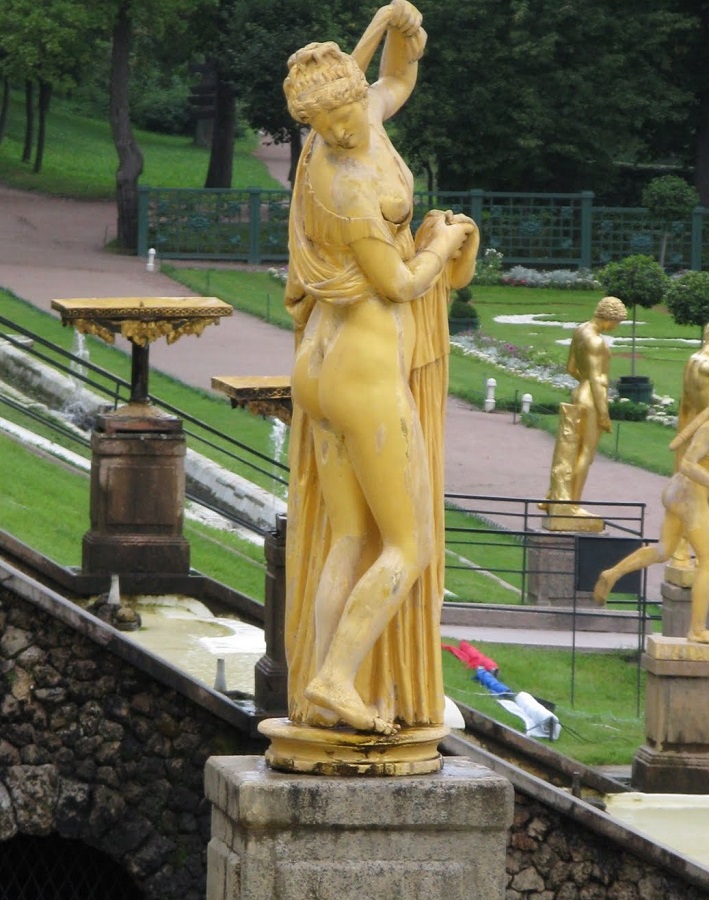

Pavlovsk Park – Russia
Pavlovsk Park (in Russian Павловский парк) is the park that surrounds the Pavlovsk Palace, an 18th-century Russian imperial building, a former residence built by Tsar Paul I of Russia near Saint Petersburg. After his death, it became the home of his widow, Sophia Dorothea of Württemberg. It is now a state museum and a public park
Pavlovsk Park is a landscape park in the Pavlovsk State Museum-Reserve. Located in the valley of the Slavyanka river. in Pavlovsk, near St. Petersburg – Russia. It is a monument of Russian classicism of the late 18th and early 19th centuries with collections of Russian, Western European and ancient art. The area of the park is about 600 hectares.
The park includes seven landscape areas: the Palace, the Valley of the Slavyanka River, the Great Star with the Valley of Ponds, Old Sylvia, New Sylvia, Parade Field and White Birch. The center of the park composition is Paul’s Palace. The park is decorated with pavilions of different nature: classical (Temple of Friendship, Colonnade of Apollo, Aviary, Cold Bath, Round Room, Pink Pavilion); Pastoral (Russian) white. (Dairy, Pil Tower), memorial (Monument to parents, Mausoleum of the benevolent husband), as well as bridges over Slavyanka, marble and bronze sculptures.
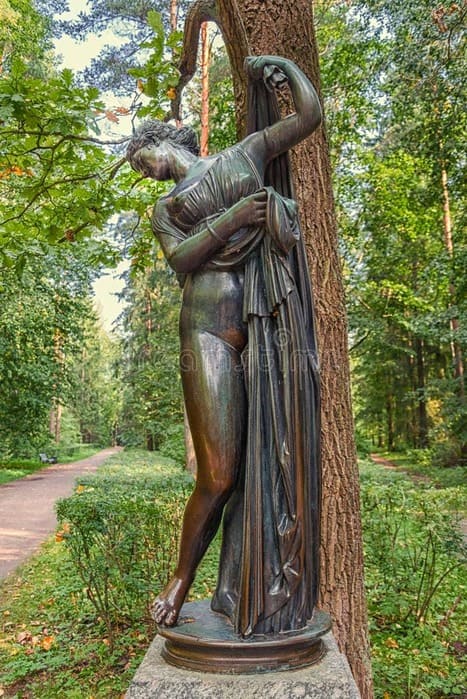
The architects of Pavlovsk Park
Charles Cameron Architects were involved in the creation of the park, palace and pavilions. , Vincenzo Brena , Pietro Hansa , Andrei Voronikhin , Carl Rossi , Andrei Stackenschneider . The Pavlovsk Park and Palace Ensemble is an object of Russian cultural heritage. One of the main attractions is the bronze statue of Venus Callipyge
Tuileries Garden – Paris – France
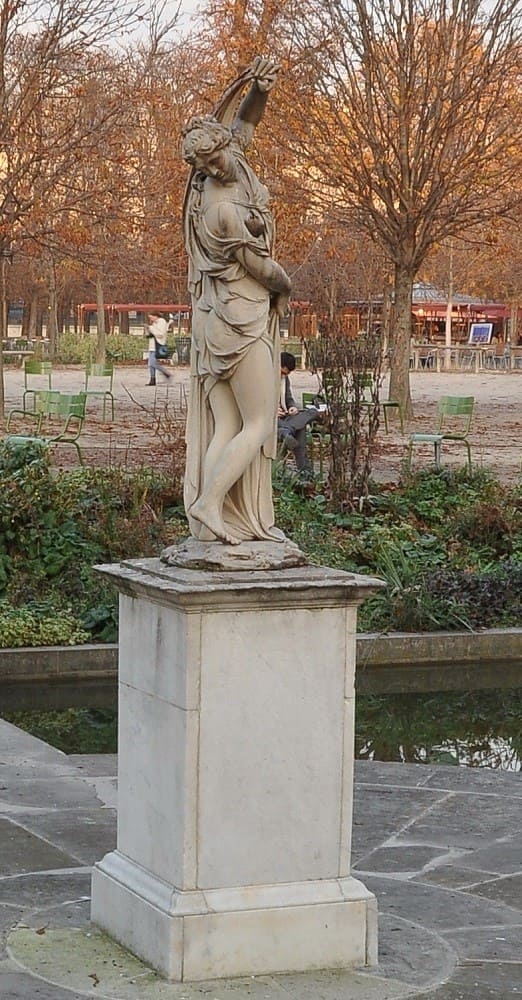
Yusupov Palace – Saint Petersburg – Russia
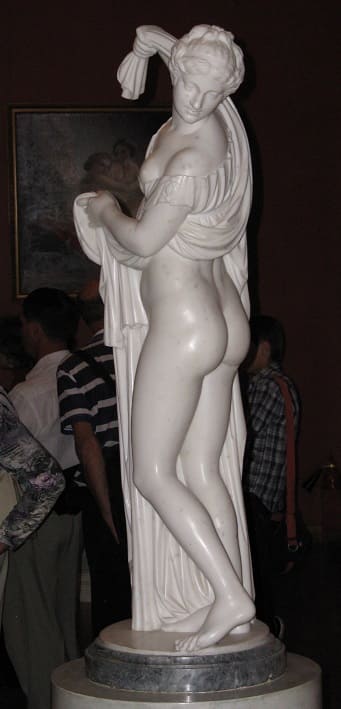

Other sculptures of the Goddess Venus
The goddess Aphrodite, the Venus of the Romans, had numerous temples for her worship in her different invocations, such as Venus Vixtrix (Victorious), Venus Genetrix (Mother) or Venus Verticordia (the one who changes hearts), to name a few. some. She currently is still part of popular culture and her figure is still an object of admiration. Numerous original statues and copies were carved, some of which survive to the present day
Milo + Medici + Cnidus + Arles + Myrina + Frejus + Esquilne + Lely
Venus de Milo
On April 8, 1820, a statue was discovered on the island of Milos in the Aegean that would later become famous as The Venus de Milo because it is believed to represent the goddess Aphrodite.
It is a Greek statue sculpted between 130 and 110 BC, it measures 203 centimeters, making it larger than life. When she was discovered she had both arms, but these were lost at some point. At first it was wrongly attributed to Praxiteles, but it is believed that its author was the sculptor Alexander of Antioch.
Her fame is largely due to French publicity and she is not considered by all to be the ultimate in female beauty (Renoir called her “the great gendarme”).
Although it is the most famous statue of the goddess of love and beauty, it is not the only one. A large number of sculptures existed in the classical world, some of which have come down to us in various states of preservation, some only survive in later copies.
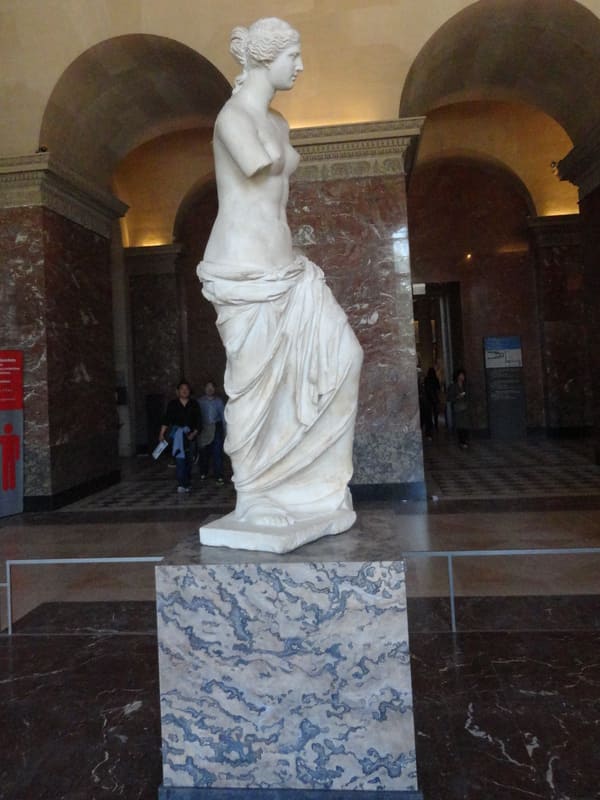
Venus de Milo History
At the beginning of the 19th century, the island of Milos was under Turkish-Ottoman control. An ancient Roman theater had recently been discovered, attracting archaeologists and collectors to the region, especially the French.
This Venus was found by chance in 1820, when a peasant found the piece while he was extracting rocks from some ruins to build a fence. It is probable that those ruins were known to the French archaeologists, who were prowling the area.

The statue was divided into several parts. The peasant was aware of the value of his find, so he covered the Venus with earth. This peasant somehow made contact with the French The French Jules Dumont D’Urville, second lieutenant, and Viscount Marcellus, secretary to the French ambassador, bought the work.
The Venus thus traveled from Milo to Constantinople and from there to Toulon, where it was purchased by the Marquis de Rivière, Charles François de Riffardeau. He donated it to King Louis XVIII, who finally made it available to the Louvre Museum.
Venus of Medici
This statue of Venus has a known author. In fact, on the podium at the base it bears his signature: Cleomenes, son of Apollodorus, a sculptor who worked in Athens during the 1st century BC. C. Therefore, the work is datable in the period between the second and first century toIt is a very rare circumstance for ancient statues. There are also traces of original colors: gold on top of the hair, cinnabar on the lips and Egyptian blue at the base.
According to Pirro Ligorio, the statue was found in Rome, near the Baths of Trajan, inside the vineyard of the Bishop of Viterbo, Sebastiano Gualtieri. It immediately became part of the prelate’s collection and in 1566 it was acquired by Alfonso d’Este. In 1575 it was sold to Ferdinando de’ Medici, who decided to export it to the Villa Medici collection of antiquities in Rome. The statue was kept in the sumptuous Roman residence for more than a century.

In 1677, it was moved to Florence, along with such masterpieces as Knife Grinder and Wrestlers. These famous works were exhibited in the Tribune, the most precious space of the Uffizi, and the Venus was elevated to a symbolic representation of the entire Florentine museum. The prestige of the statue can be seen in later events and in the successive history of collecting. In 1802, Napoleon ordered the statue’s transfer to Paris. The French period lasted until 1816, when the statue was relocated to its original location in Florence.
Aphrodite or Venus of Myrina
Aphrodite was not always naked, as this beautiful terracotta statuette shows. It corresponds to the second century and was found in Myrina, Asia Minor.
Venus of Arles
This sculpture, known as the Venus of Arles, is a Roman copy based on an original model by Praxiteles, the Aphrodite of Thespiae. This is not surprising since most of the Greek works that have survived to the present day are not Greek, but rather Roman works copied in marble from Greek originals made in bronze.

The Venus of Arles is a sculpture larger than life, reaching almost 1.94 meters in height, which gets its name from having been found in the Roman theater of Arles in France. The sculpture did not appear complete, but the first thing that was found was the head and later some of the body parts. The work, however, underwent a major restoration by the sculptor Jean Cornu when the French monarch Louis XIV required the piece for his personal collection at Versailles.
In spite of everything, the experts are sure that the most defining features of Praxitellian sculpture can be found in the piece, being a work of youth that would act as a prelude to other more mature and meditated sculptures such as the well-known Aphrodite of Cnido. Currently on Expo at the Louvre Museum

Description of the Venus of Arles
In the Venus of Arles we find a graceful and beautiful goddess who appears naked from the waist up and who presents an elegant movement that makes her move away from the static models that had been imposed until then. One of the main characteristics of the Venus of Arles is the multiplicity of its points of view since the posture of its limbs makes it so open that the viewer can go around the work to find new angles of vision.
Her hip posture is slightly elevated, and is known as the Praxitelean curve, so typical of the sculptor Praxiteles that it contributes to giving the piece greater naturalism and dynamism.
Work of the Sculptor Praxiteles
The work of Praxiteles revolutionized the sculpture of ancient Greece and today he is still one of the most renowned artists in the classical world, not in vain his sculptures set new parameters both in terms of the composition of the work, as well as the thematic innovation.
No data is known about Praxiteles and not even his date of birth, which is assured among experts around the year 400 BC. in the city of Athens. Praxiteles was the son of Cephisodotus the Elder and according to Pliny his golden years in sculpture must have been in the decade of the year 365 BC
Venus of Frejus
A late 1st century BC or early 1st century statue is the Venus of Frejus, considered to be a copy of a sculpture by Callimachus (420 BC). Some parts, such as the neck, the left hand and the fingers on the right are modern restorations. His left hand was holding the Judgment of Paris apple and his right hand is about to cover his head.

The Venus Genetrix bears the nickname of Frejus because this is the town in southern France where it appeared in the year 1650. It is 1.65 meters tall and is a Roman copy of the 1st century BC carved in marble and based on a sculpture 5th century BC bronze Greek work of Alcamenes and according to others of Callimacos. Keep in mind that in the correspondence between Roman and Greek gods, Aphrodite corresponds to Venus.
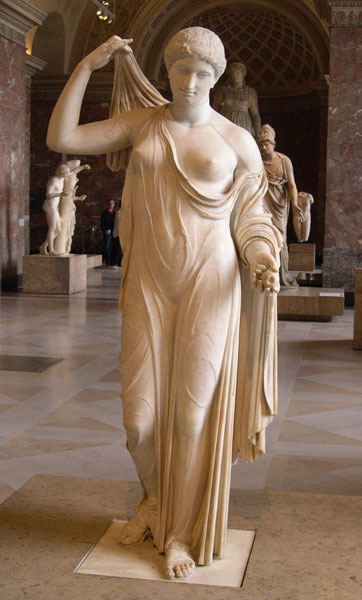
Later reproductions adopted the name “Venus of the gardens” due to the large number of copies that were made in Roman times and the fact that it was common to find some of them in the gardens of the luxurious villas and palaces of well-off families. The apple she carries in her right hand is the famous “apple of discord” that Venus won as the most beautiful of women in tough competition with Hera and Athena after “the trial of Paris” Currently the Venus of Frejus is exhibited in the Louvre Museum in Paris.
Milo + Medici + Cnidus + Arles + Myrina + Frejus + Esquilne + Lely
Venus of Cnidus
It is a sculpture by Praxiteles made around 330 BC, a work known as the Aphrodite of Cnidus, alluding to the Greek city on the west coast of modern Turkey, which was his first home. In ancient times it was considered a milestone in art, because it was the first life-size statue of a nude female figure, after centuries in which sculptures of women, such as Frasiclea, had been depicted fully clothed.
Praxiteles original sculpture is long lost; according to one story, she was finally taken to Constantinople, where she succumbed to the fire in the 5th century AC. But Aphrodite of Cnidus was so famous that hundreds of versions and replicas were made throughout the ancient world, life-size and in miniature, even drawn on coins. Many of these copies have been preserved. The Venus of Cnidus served as a model for later works such as the Venus of Milo.
What does the Venus of Cnidus represent?
She represents the goddess of love and a symbol of beauty and fertility. Curiously, she was rejected by the population of Cos, a place for which she was initially destined for being immodest. The model seems to have been Phryné, a Greek hetera and possible lover of Praxiteles.

The citizens of Cnidus bought her and venerated her in her city in a shrine. This painted and wax varnished Aphrodite that melted the colors, with glitter with painted eyes aroused the admiration of the world and became an object of worship. She was the first truly feminine nude and considered an ideal of beauty and for this reason numerous copies were made that, although approximate, do not reflect what she was.
She presents her standing up at the moment of getting ready to take a bath with a bracelet on her right arm as an element of coquetry, slightly forward to cover her pubis and slightly turned to the left. As usual in Praxiteles statuary, it has support: a column for the tunic and a hydria.
Esquiline Venus
The Esquiline Venus, a figure with a smooth line and small breasts, belongs to the Neo-Attic school. Its name comes from the fact that it was found on the Esquiline, one of the seven hills of Rome. Her arms were broken and lost due to the carelessness in which the garden in which she was found fell.

Venus of Lely
Lely’s Venus is a marble statue of the Crouching Aphrodite type. It is a copy of a Hellenistic original from Doidalsa of Bithynia and dates back to the Antonine period.
The statue is first recorded in the Gonzaga Collections in Mantua, where it was inventoried in 1627. The statue was seen by the painter Rubens, who stayed with the Gonzaga family while on the Continent collecting works of art for Charles I of England. It was a major influence on his voluptuous style of painting the female nude.
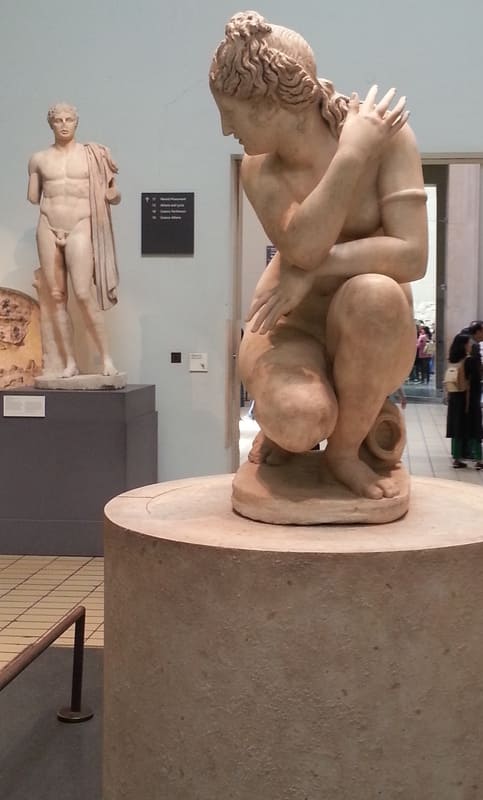
In the dispersal of Charles I’s art collections and during the regency, it came into the possession of the painter and connoisseur Sir Peter Lely, from whom it derives its name. Two years after Lely’s death (1682), it was repurchased from his collection for the Royal Collection. The statue was stolen from Whitehall Palace after it was destroyed by fire on January 4, 1698 and was recovered four years later by the Crown. Since 2005 it has been on long-term loan to the British Museum, after conservative treatment, and is currently on display in Gallery 23.
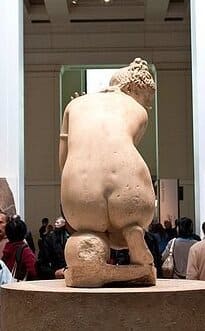
Other sculptures
Priapus God Of Wine And Ecstasy In Greek Mythology
Priapus is the god of wine and ecstasy, he was a minor god in Greek mythology. The distinguishing feature of him was his erect phallus. In Roman mythology, his connection to Ares, the god of war, is more prominent, as Priapus taught the boy the skills of war. Cursed with his gigantic phallus while in Hera’s womb, he was banished to Earth and raised by shepherds.

Origin of the worship of the God Priapus
Priapus was worshiped as a deity and also developed a cult that spread to Italy. The probable origin of his followers is in ancient Greece, in the vicinity of Hellespont. The city of Lampsacus in the Hellespont is considered to be the birthplace of the god due to the ritual that is performed there. The followers performed a ritual sacrifice of donkeys that was directly related to Priapus. In art, the god is occasionally depicted in a Persian cap, implying possible non-Greek origins. His influence continued into the apostolic era (33-100 AD) or so.
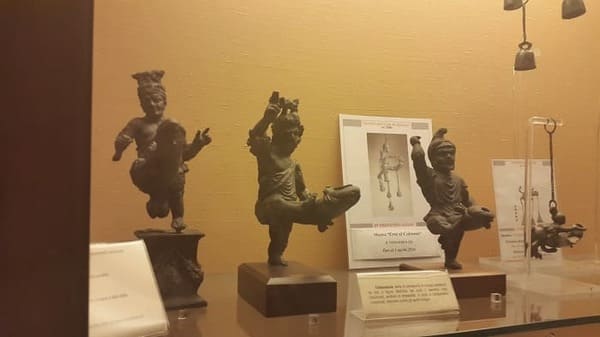
Mythology of Priapus as god of wine
The stories of Priapus mainly focus on his giant erect penis. Statues of the god were placed in the fields to offer protection and produce a bountiful harvest. The statue also represented a symbol of no entry. Here it implied that intruders would risk violent rape if they crossed the established border at the site. The rape of men and women was common in ancient times.

It was seen as a form of punishment, but there is no word in ancient Greek or Latin that has exactly the same connotations as the word rape is used today. The god Priapus was also the patron saint of sailors. Sailors used the statue of him for protection and guidance on the open sea.
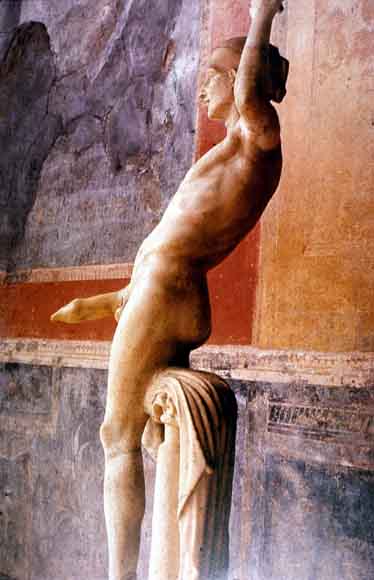
In the collection of poems called Priapeia, thought to be written in the classical period, we find a collection of epigrams about the god and his gigantic penis. The poems were believed to have been written by a group of poets who met at the house of Maecenas, a protector of poets. The god boasts of the size of his penis, of his virility and warns of the sexual punishment he will inflict on any intrusion into his gardens or fields.
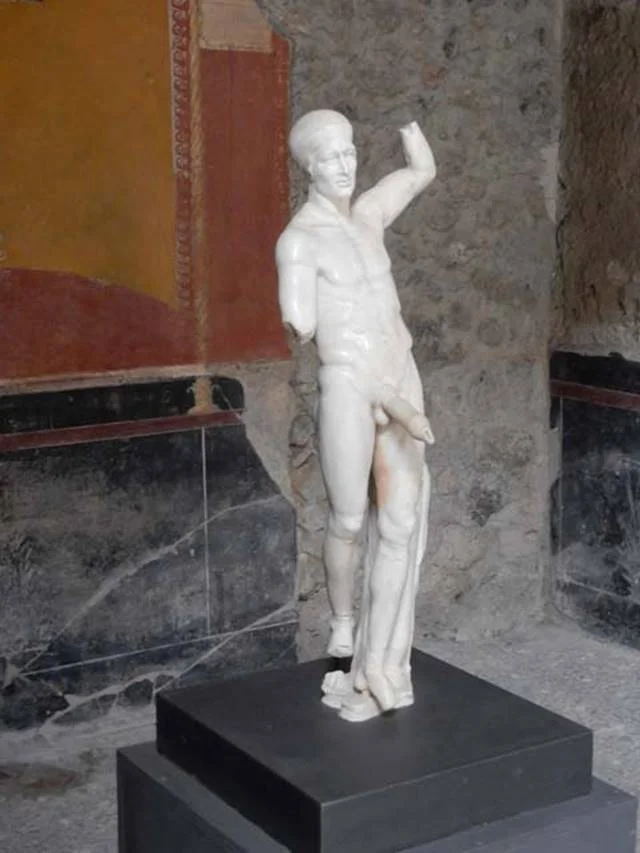
Lottis & Priapus
Ovid’s Fasti, published in AD 8, tells of the god trying to sneak up on the nymph, Lotis, when she falls into a drunken stupor at a celebration. Unfortunately, a donkey warns the partygoers of Priapus impending actions and wakes everyone up. She stops him from attacking her and the god slips away. Priapus later kills the donkey, leading to popular sacrifice by the city of Lampsacus.

Appearance of the God Priapus
The god is depicted as a muscular, bearded man with a huge erect red phallus. He is the subject of numerous Roman paintings, most notably a well-known fresco in which he is seen weighing a bag of money against his phallus. The statue of Priapus in the House of the Vettii in Pompeii is one of the best known. Gnome-shaped statues of him were commonly found in gardens or at road intersections in Rome and Greece. To win the favor of the god, the traveler would have to caress his phallus.















